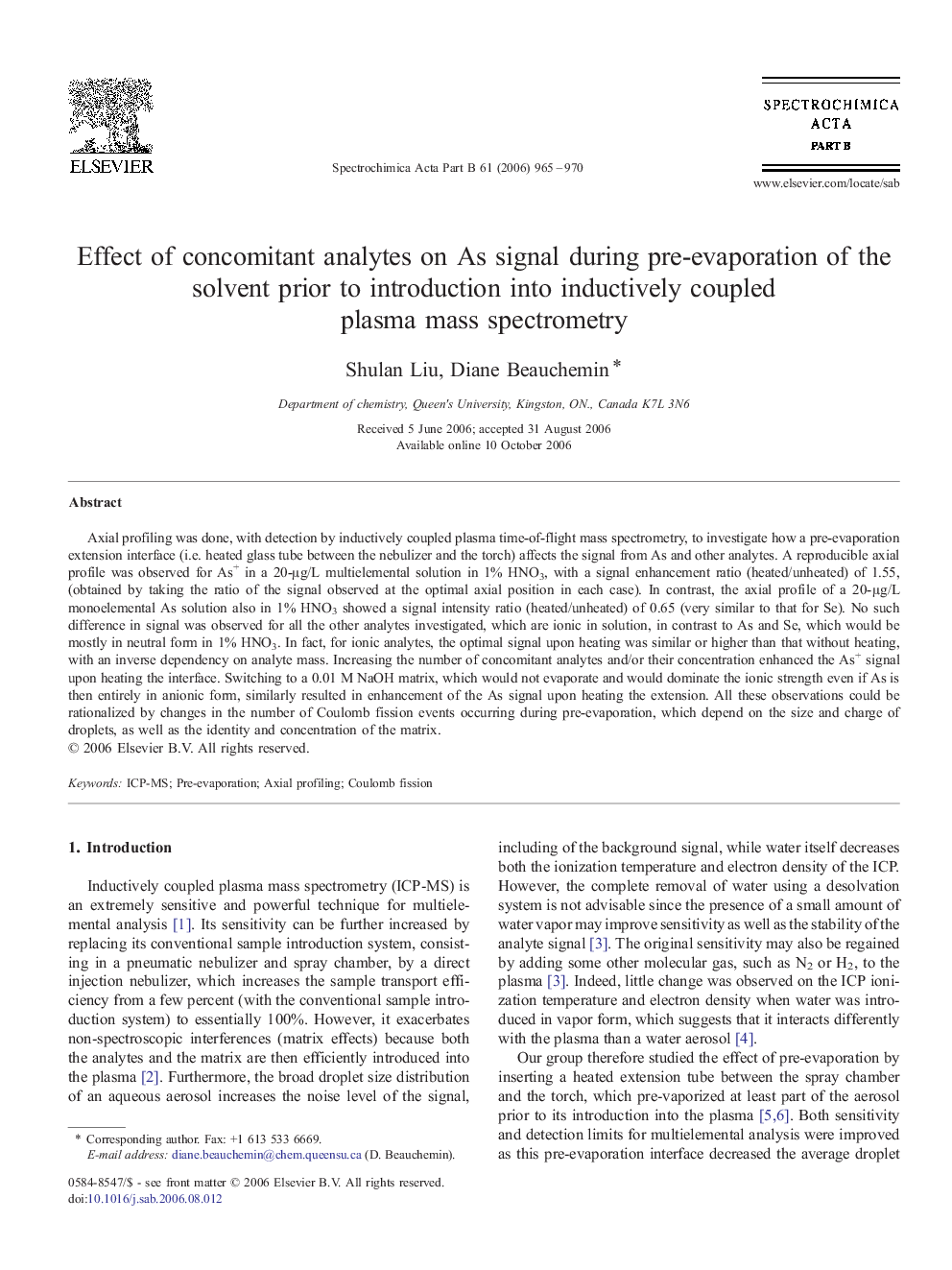| Article ID | Journal | Published Year | Pages | File Type |
|---|---|---|---|---|
| 1240929 | Spectrochimica Acta Part B: Atomic Spectroscopy | 2006 | 6 Pages |
Abstract
Axial profiling was done, with detection by inductively coupled plasma time-of-flight mass spectrometry, to investigate how a pre-evaporation extension interface (i.e. heated glass tube between the nebulizer and the torch) affects the signal from As and other analytes. A reproducible axial profile was observed for As+ in a 20-μg/L multielemental solution in 1% HNO3, with a signal enhancement ratio (heated/unheated) of 1.55, (obtained by taking the ratio of the signal observed at the optimal axial position in each case). In contrast, the axial profile of a 20-μg/L monoelemental As solution also in 1% HNO3 showed a signal intensity ratio (heated/unheated) of 0.65 (very similar to that for Se). No such difference in signal was observed for all the other analytes investigated, which are ionic in solution, in contrast to As and Se, which would be mostly in neutral form in 1% HNO3. In fact, for ionic analytes, the optimal signal upon heating was similar or higher than that without heating, with an inverse dependency on analyte mass. Increasing the number of concomitant analytes and/or their concentration enhanced the As+ signal upon heating the interface. Switching to a 0.01 M NaOH matrix, which would not evaporate and would dominate the ionic strength even if As is then entirely in anionic form, similarly resulted in enhancement of the As signal upon heating the extension. All these observations could be rationalized by changes in the number of Coulomb fission events occurring during pre-evaporation, which depend on the size and charge of droplets, as well as the identity and concentration of the matrix.
Keywords
Related Topics
Physical Sciences and Engineering
Chemistry
Analytical Chemistry
Authors
Shulan Liu, Diane Beauchemin,
